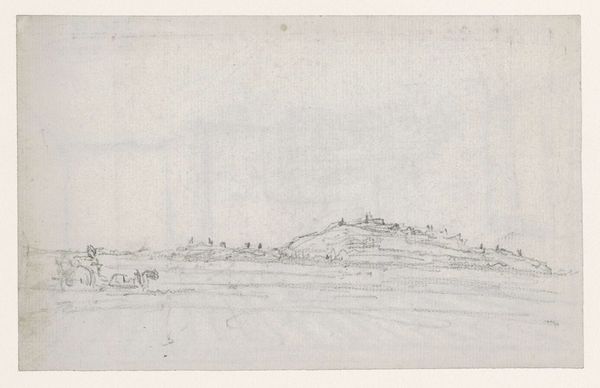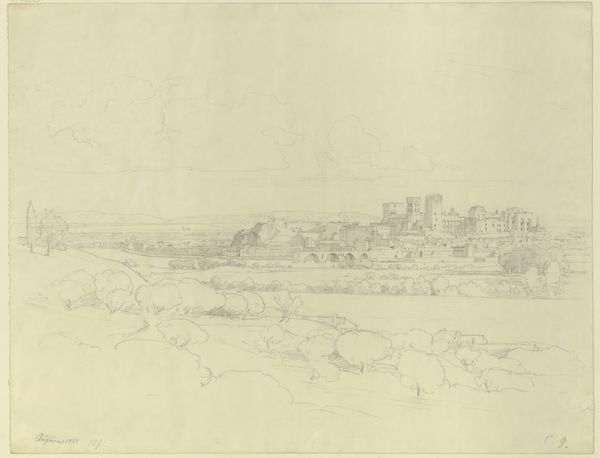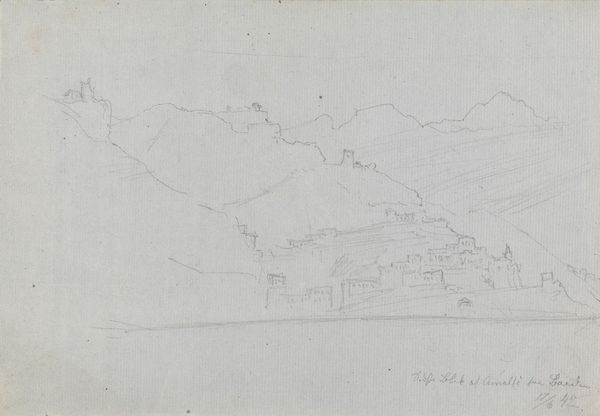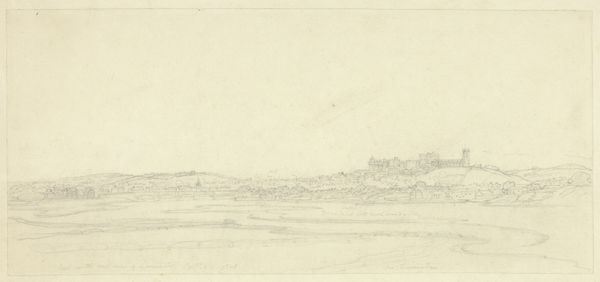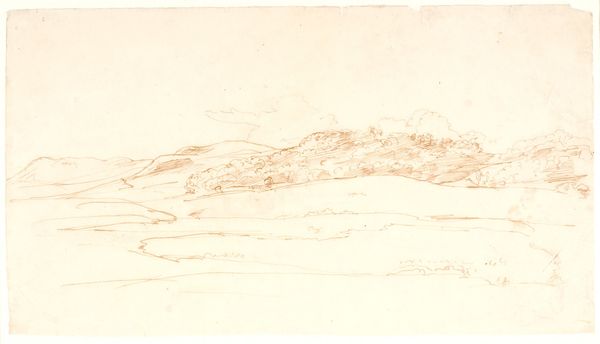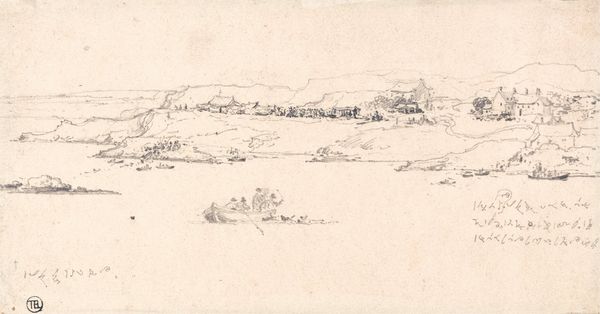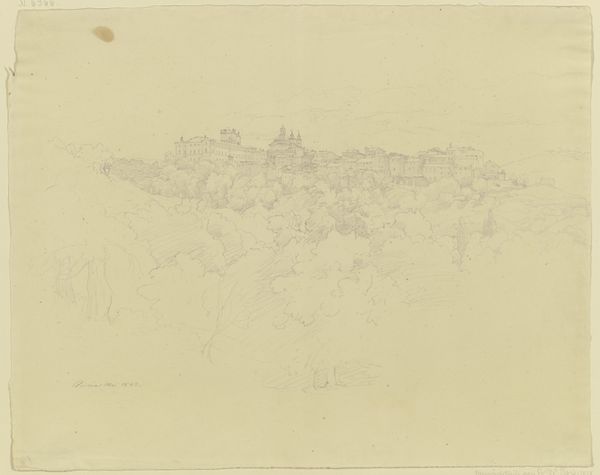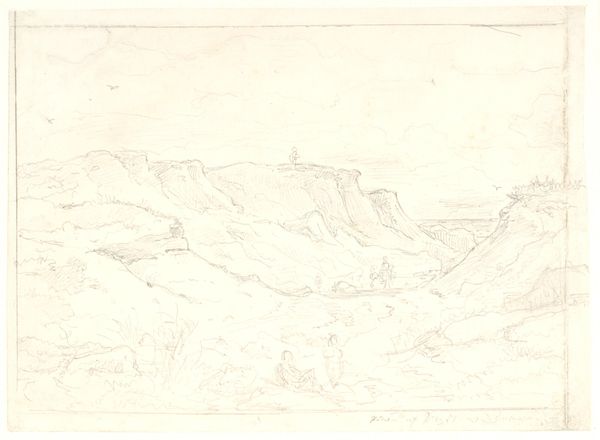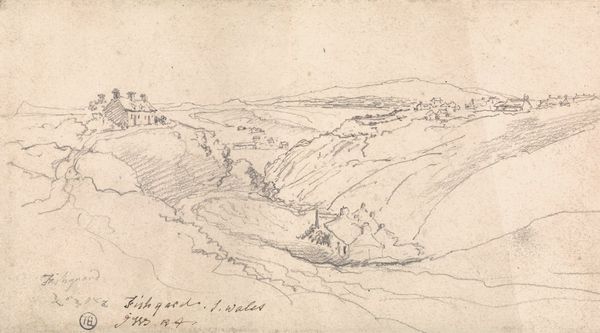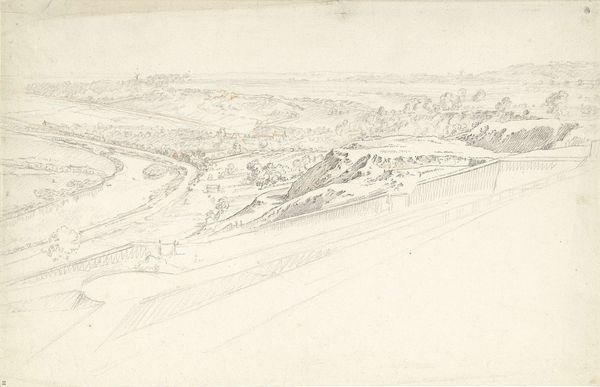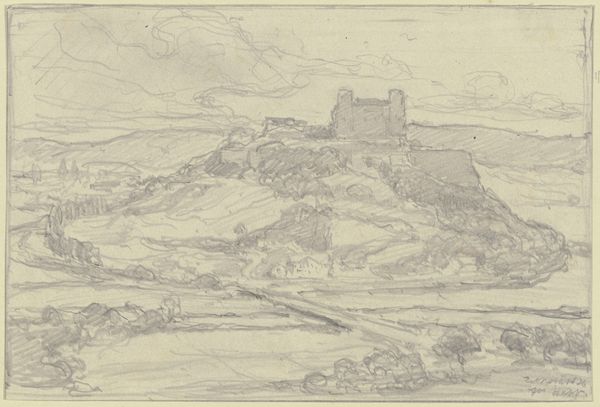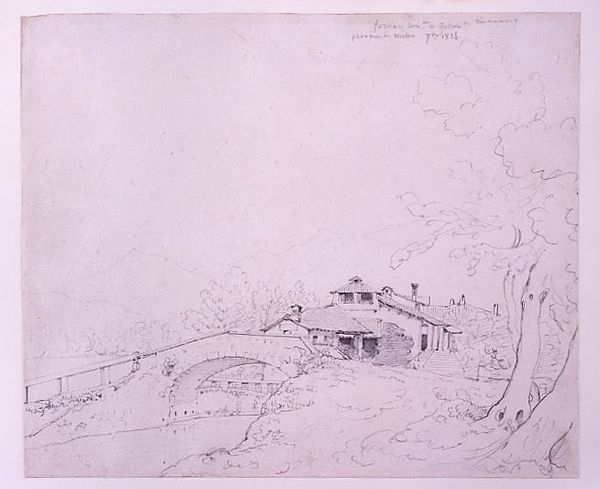
drawing, pencil
#
drawing
#
landscape
#
romanticism
#
pencil
Dimensions: 6 9/16 x 8 3/8 in. (16.67 x 21.27 cm)
Copyright: Public Domain
Curator: This delicate pencil drawing, created by Théodore Rousseau around 1825, is titled "Village on a Hilltop." You can currently find it on display here at the Minneapolis Institute of Art. What impressions does it spark for you? Editor: Immediately, I see a landscape tinged with melancholy. It’s subtle, almost understated, but the composition with the village perched atop a hill hints at isolation, doesn't it? Curator: Indeed. The Romantic era in art often explored themes of the sublime and the solitary. Rousseau was capturing the spirit of his time, looking back towards simpler landscapes, representing a form of refuge and also the embodiment of the power of time to withstand civilization and change. These sorts of hilltop villages have always captured people’s imagination and continue to even today, as cultural markers that time is always moving, we’re never still. Editor: And the village itself, clustered as it is, reminds me of a collective dream— a shared space defined as much by its psychological boundaries as its physical ones. I’m thinking about how the placement, up on the hill, creates a symbolic removal from the lower ground. What were hilltop settlements and the history of social mobility and what meanings do they reflect for those of us living now? Curator: You're touching upon a key aspect. Rousseau, and other artists from the Barbizon School with whom he’s associated, were very interested in the essence of ‘place.’ It's not just about the physical appearance but about conveying the spirit, the memories held within a particular environment. In other words, landscapes are never innocent, always historical. Editor: The monochrome medium amplifies that feeling, too. It's as if the lack of color strips away the immediate beauty and leaves us with a distillation of memory, hinting to a distant past that shapes us and gives a meaning. Curator: I think Rousseau’s pencil technique lends a temporal feel, conveying the cultural significance embedded within the landscapes he captured. This landscape isn’t just about geographical features but about how societies organize themselves in particular environments and develop complex memories over time. The way such environments endure says something deep about ourselves, wouldn’t you agree? Editor: Absolutely, I’d say that it’s very much to do with the idea of landscapes capturing an idyllic past that always has and will affect us. That this drawing is still with us only shows us this effect more profoundly. Curator: Thank you.
Comments
No comments
Be the first to comment and join the conversation on the ultimate creative platform.
